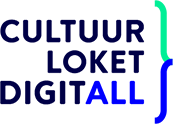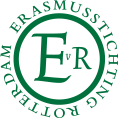Article
The fulfilment of avant-garde

January 18, 2006
“Three things have shaken the art of our time to its depths, have given it a new face, and have prepared it for a mighty new upsurge: the disappearance of religion induced by critical philosophy, the dissolution of the atom in science, and the massive expansion of population in present-day Europe,” anounced Hugo Ball, a leading Dadaist, in 1916. This is the feeling of modernity, arising from the development of new scientific technologies and the growth of cities. The world was expanding and shrinking at the same time. Discoveries in science opened up totally new spheres – exemplified by the theory of relativity – whereas new means of transport diminished distances. The result was a change in perception: the world could not be grasped in an all-embracing orderly way any more. The senses were flooded with stimuli and impressions, the sheer velocity of life in the big city.
Art after 1900 looked for innovative non-linear ways of representing this new awareness of life. Artists, living in big cities and moving amongst anonymous crowds of people, strove to depict the complexity of the world and the simultaneousness of impressions they experienced. The techniques of collage and montage thus gained importance in the 20th century: they made it possible to show different spheres of life simultaneously. From Futurism and Dada to the experimental groups in Vienna after the second World War, collage became the predominant technique in avant-garde art, used in many different ways. ‘Monteurdada’ John Heartfield made photocollages, Kurt Schwitters assembled all kinds of garbage for his ‘Merz’-collages, and the voluminous novels by Alfred Döblin, James Joyce and John Dos Passos transferred this technique to literature.
Borders between different forms of art became diffuse. The various avant-garde movements were able to express their ideas in literature and music or sound art as well as in the pictorial arts. Many expressionist writers – for example Franz Marc – were also painters; the practitioners of concrete poetry were often graphic designers and visual poetry nowadays is exhibited in art museums. And how can one define Kurt’ Schwitters ‘Ursonate’ as a mere work of literature?
Artists were not held back by national borders either. All avant-garde movements had a strongly international character, and their exponents were often quite cosmopolitan. Not only was the contact, collaboration and interaction between artists themselves much more intensive than in former periods, avant-garde movements also changed the way artists communicated with their audience. As the scandalous performances of the Dadaists show, the audience should be confronted and included, even be an interactive part of, the work of art.
Art often calls for a technology before the technology itself is invented. Walter Benjamin expresses this phenomenon in his famous essay “The Work of Art in the Age of Mechanical Reproduction”, first published in 1936: “One of the foremost tasks of art has always been the creation of a demand, which could be fully satisfied only later.” Benjamin distinguishes three main ‘epochs’ within the development of any particular art form: first the technology itself creates an artistic movement. Secondly, the artistic movement aims at effects that are easily realized later, by a new art form. And, finally, social changes work towards a change in the general appreciation of art, which however will serve the new artistic movement only later on.
Benjamin’s favourite example is Dadaism and the development of the cinema. According to Benjamin, Dadaism aimed for a new way of looking at art, which was opposed to the old – contemplative – way of appreciating art, but which could only be realised by new art forms like the cinema. The notion of distraction is the key to this new way of appreciating art. For Benjamin, film has a distinctively ‘tactile’ element: movies are “based on changes of place and focus which periodically assail the spectator”. Film shocks with effects resembling the assault of impressions and images in the big city. One only needs to think of Baudelaire’s concept of “spleen” – Benjamin, writing about Baudelaire, describes it as follows: “Spleen is the feeling of catastrophe in permanence.” The overload of experiences, the proximity of the crowd and the anonymity of life in the big city put an end to the possibility of contemplation in art.
Benjamin’s ideas, as voiced in “The Work of Art in the Age of Mechanical Reproduction”, can quite easily be extended to computer technology. In fact, computer technology fulfills the demands of avant-garde art better than film. Computers and the world wide web provide not only multimediality, but also interactivity and the possibility of performances initiated by the user, by clicking or directing the mouse. In fact, the web embodies the old technique of collage in a new form, and all dominant computer operating systems are based on the possibility of including different kinds of material. It is a decisively ‘tactile’, interactive medium. Links can be inserted and the user can decide whether and when to use them. Users themselves determine the order in which they read the non-linear texts that are prevalent on the web. It is even possible to create works of art together via the internet, unhindered by national borders and physical distances.
Looking at the existing e-literature on the web, it becomes obvious that some time will pass before all possibilities of this medium can be fulfilled, and serious aesthetic criteria for this new kind of art will evolve. ‘E-literature’, the term most often used for various literary forms found on the web, ranges from plain texts that might as well be read in print, to animation with moving words and letters, and texts using interactivity and other possibilities of multimediality.
Ana Maria Uribe’s “Tipoemas”, to give an example, continues the tradition of visual poetry in Central Europe and South America of the 60’s. It is poetry reduced to a word, or even to the letters themselves. The danger here is always the loss of all linguistic meaning. When single letters just turn into marching soldiers, an image not related to language might do equally well.
Interestingly, the world wide web, a kind of culmination of the artistic technologies of the earlier 20th century, is also the best example of Benjamin’s theory of distraction as determining the way we now look at art. When a user has opened a fourth, fifth, sixth window simultaneously, he or she must surely reach the limit of whatever is the opposite of contemplation.
The full technical realisation of avant-garde artistic aims then also carries with it the seeds of meaninglessness, if quality and innovation are not ensured. Contemporary exponents keep avant-garde art alive, yet can give it an obsolete flavour at the same time. The actual fulfillment of the avant-garde through computer technology might then, paradoxically, also mean its defeat and redundancy.
While avant-garde writers in the 20th century were limited by the print medium, their experimental techniques foreshadowed, even shaped, modern computer technology and the world wide web, argues Sarah Dudek.
New techniques shape art fundamentally: new possibilities are provided, new distribution systems develop, even new kinds of art evolve – think of photography, film, radio plays. But it also works the other way round: art can shape new techniques. The ideals and aims of avant-garde art in the early 20th century required an interactive multimedia realization that could only be provided later, in the age of computer technology. As a vision, a sensibility is needed in order to start new developments, one could even say that the avant-garde has paved the way for contemporary computer technology. Early 20th century avant-garde techniques have shaped not only art forms like contemporary e-literature, but even the most fundamental operating systems computers are based on.“Three things have shaken the art of our time to its depths, have given it a new face, and have prepared it for a mighty new upsurge: the disappearance of religion induced by critical philosophy, the dissolution of the atom in science, and the massive expansion of population in present-day Europe,” anounced Hugo Ball, a leading Dadaist, in 1916. This is the feeling of modernity, arising from the development of new scientific technologies and the growth of cities. The world was expanding and shrinking at the same time. Discoveries in science opened up totally new spheres – exemplified by the theory of relativity – whereas new means of transport diminished distances. The result was a change in perception: the world could not be grasped in an all-embracing orderly way any more. The senses were flooded with stimuli and impressions, the sheer velocity of life in the big city.
Art after 1900 looked for innovative non-linear ways of representing this new awareness of life. Artists, living in big cities and moving amongst anonymous crowds of people, strove to depict the complexity of the world and the simultaneousness of impressions they experienced. The techniques of collage and montage thus gained importance in the 20th century: they made it possible to show different spheres of life simultaneously. From Futurism and Dada to the experimental groups in Vienna after the second World War, collage became the predominant technique in avant-garde art, used in many different ways. ‘Monteurdada’ John Heartfield made photocollages, Kurt Schwitters assembled all kinds of garbage for his ‘Merz’-collages, and the voluminous novels by Alfred Döblin, James Joyce and John Dos Passos transferred this technique to literature.
Borders between different forms of art became diffuse. The various avant-garde movements were able to express their ideas in literature and music or sound art as well as in the pictorial arts. Many expressionist writers – for example Franz Marc – were also painters; the practitioners of concrete poetry were often graphic designers and visual poetry nowadays is exhibited in art museums. And how can one define Kurt’ Schwitters ‘Ursonate’ as a mere work of literature?
Artists were not held back by national borders either. All avant-garde movements had a strongly international character, and their exponents were often quite cosmopolitan. Not only was the contact, collaboration and interaction between artists themselves much more intensive than in former periods, avant-garde movements also changed the way artists communicated with their audience. As the scandalous performances of the Dadaists show, the audience should be confronted and included, even be an interactive part of, the work of art.
Art often calls for a technology before the technology itself is invented. Walter Benjamin expresses this phenomenon in his famous essay “The Work of Art in the Age of Mechanical Reproduction”, first published in 1936: “One of the foremost tasks of art has always been the creation of a demand, which could be fully satisfied only later.” Benjamin distinguishes three main ‘epochs’ within the development of any particular art form: first the technology itself creates an artistic movement. Secondly, the artistic movement aims at effects that are easily realized later, by a new art form. And, finally, social changes work towards a change in the general appreciation of art, which however will serve the new artistic movement only later on.
Benjamin’s favourite example is Dadaism and the development of the cinema. According to Benjamin, Dadaism aimed for a new way of looking at art, which was opposed to the old – contemplative – way of appreciating art, but which could only be realised by new art forms like the cinema. The notion of distraction is the key to this new way of appreciating art. For Benjamin, film has a distinctively ‘tactile’ element: movies are “based on changes of place and focus which periodically assail the spectator”. Film shocks with effects resembling the assault of impressions and images in the big city. One only needs to think of Baudelaire’s concept of “spleen” – Benjamin, writing about Baudelaire, describes it as follows: “Spleen is the feeling of catastrophe in permanence.” The overload of experiences, the proximity of the crowd and the anonymity of life in the big city put an end to the possibility of contemplation in art.
Benjamin’s ideas, as voiced in “The Work of Art in the Age of Mechanical Reproduction”, can quite easily be extended to computer technology. In fact, computer technology fulfills the demands of avant-garde art better than film. Computers and the world wide web provide not only multimediality, but also interactivity and the possibility of performances initiated by the user, by clicking or directing the mouse. In fact, the web embodies the old technique of collage in a new form, and all dominant computer operating systems are based on the possibility of including different kinds of material. It is a decisively ‘tactile’, interactive medium. Links can be inserted and the user can decide whether and when to use them. Users themselves determine the order in which they read the non-linear texts that are prevalent on the web. It is even possible to create works of art together via the internet, unhindered by national borders and physical distances.
Looking at the existing e-literature on the web, it becomes obvious that some time will pass before all possibilities of this medium can be fulfilled, and serious aesthetic criteria for this new kind of art will evolve. ‘E-literature’, the term most often used for various literary forms found on the web, ranges from plain texts that might as well be read in print, to animation with moving words and letters, and texts using interactivity and other possibilities of multimediality.
Ana Maria Uribe’s “Tipoemas”, to give an example, continues the tradition of visual poetry in Central Europe and South America of the 60’s. It is poetry reduced to a word, or even to the letters themselves. The danger here is always the loss of all linguistic meaning. When single letters just turn into marching soldiers, an image not related to language might do equally well.
Interestingly, the world wide web, a kind of culmination of the artistic technologies of the earlier 20th century, is also the best example of Benjamin’s theory of distraction as determining the way we now look at art. When a user has opened a fourth, fifth, sixth window simultaneously, he or she must surely reach the limit of whatever is the opposite of contemplation.
The full technical realisation of avant-garde artistic aims then also carries with it the seeds of meaninglessness, if quality and innovation are not ensured. Contemporary exponents keep avant-garde art alive, yet can give it an obsolete flavour at the same time. The actual fulfillment of the avant-garde through computer technology might then, paradoxically, also mean its defeat and redundancy.
© Sarah Dudek
Sponsors
























